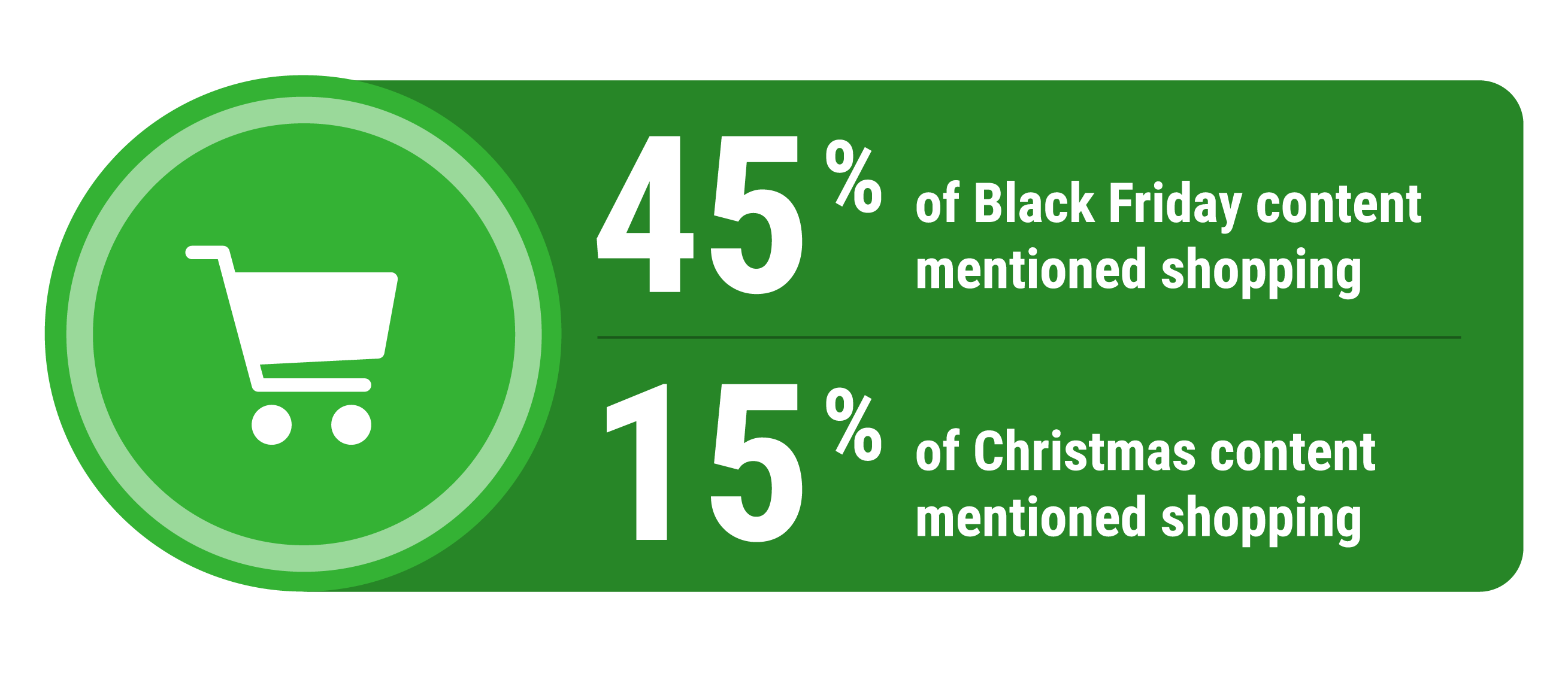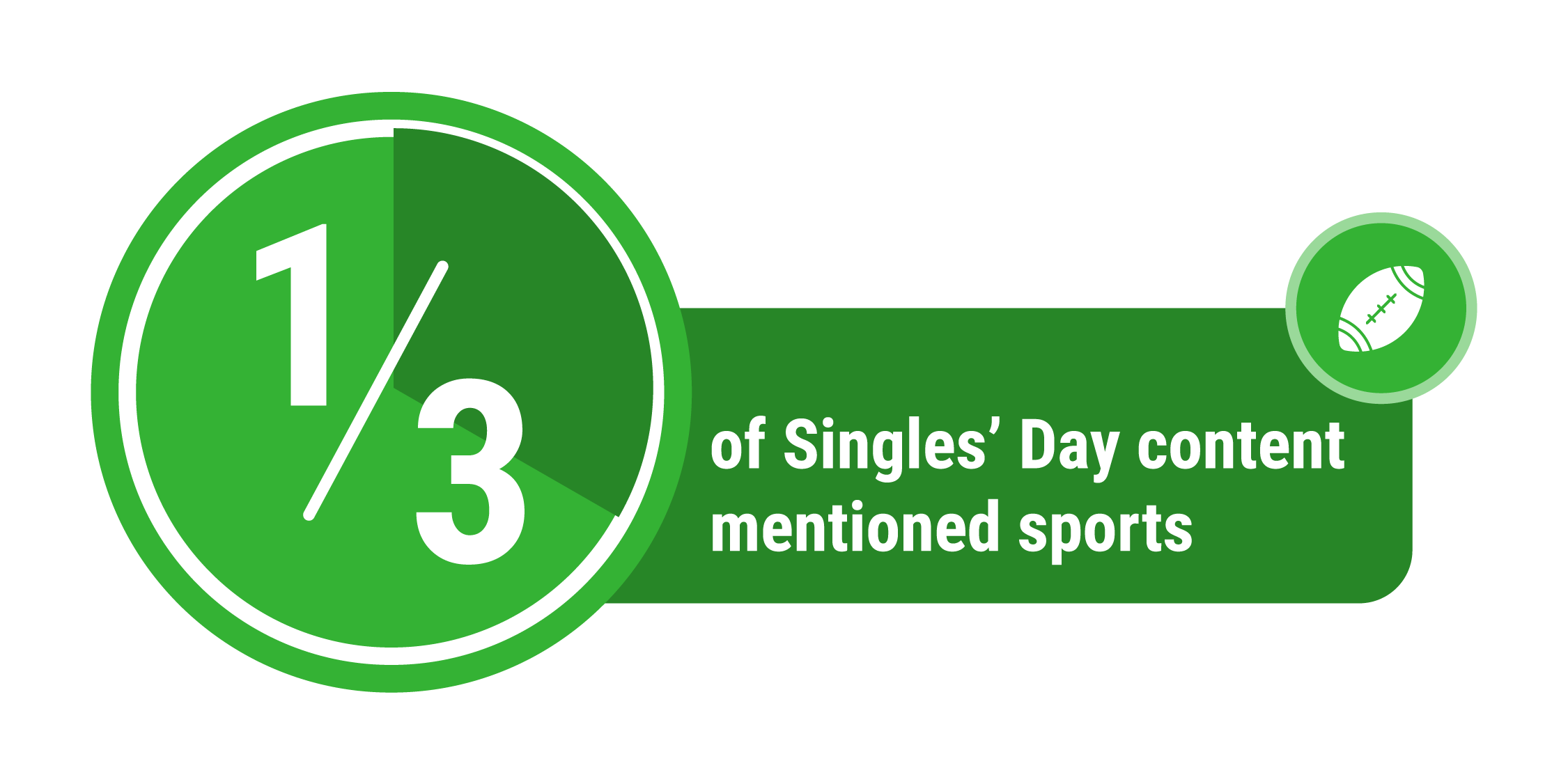
In-store shopping is a timeless leisure, but gone are the days of people corralling a Best Buy entrance at 5 am on Black Friday.
The best holiday deals have the same starting point: a well-crafted digital marketing campaign, evidenced by online visits preceding one out of every five in-store purchases. This year, U.S. shoppers were inundated with marketing messaging, with a 17 percent year-over-year (YoY) increase in mobile messages and an 8 percent YoY increase in emails the weekend before Cyber Monday, per recent Salesforce data. It’s no surprise why holiday retail e-commerce showed better-than-anticipated results; it is already at $266.89 billion in spend, projected to grow 9 percent through the end of the year — that’s 130 basis points higher than 2020.
So, as an advertiser, how do you stand out in the mix?
What separates the successful holiday marketing campaign from the one that simply fires “Shop Now” ads is curated messaging with consumer behavior at its bedrock. This means taking into account a host of factors, but at large, the cultural and technological zeitgeist.
Every year, DV processes trillions of media transactions. In 2023 alone we measured 7.0 trillion. DV’s Universal Content Intelligence, a solution that is part-AI, part-human oversight, takes this data and classifies content to identify patterns around content consumption.
From Q4 2023–Q1 2024, we discovered some fascinating trends. In this blog, we reveal these insights and how advertisers can use them to inform their holiday advertising this season and in 2025.
How Holiday Shopping Influences Content Consumption
The digital-first shopping evolution, driven by e-commerce, mobile apps and social media, has not only changed how consumers shop but also how they engage with content. Shoppers now seek inspiration, product reviews and deals across multiple platforms.
But content consumption during the holidays is dynamic, not static. It adapts to the needs of consumers as they move through different phases of the shopping journey — early in the season, people focus on planning and researching, while closer to the holidays, urgency drives last-minute searches for inspiration to make a purchase.
The type of content people consume also varies based on key moments throughout the holiday season. Our data revealed that searches for vacation-related deals spike during Thanksgiving and Christmas and taper off after the new year, while searches related to automotive products are low during the holidays and increase after the new year. This could be reflective of consumers looking for deals during the holidays but waiting to shop for a car until they’ve recovered from holiday spending.
Why Online Content Consumption Trends Matter to Marketers
For marketers, the central question is this: When and how can I connect with my audience in the most impactful way?
The answer lies in understanding the rhythms of holiday content consumption. By leveraging data-driven insights into when and where consumers are seeking information, you can tailor your messaging to align with consumer needs. For example, a well-placed ad featuring a must-have gadget during Cyber Monday could capture attention in a critical shopping moment, while a video showcasing cozy holiday décor might resonate more deeply as consumers prepare for family gatherings in December.
Relevant, timely content is key to building trust and driving conversions during this busy period. Brands that can anticipate the needs of their audience and offer value through helpful tips or exclusive offers will be equipped to build a strong campaign strategy.
The Challenge of Capturing Consumer Attention in a Competitive Advertising Market
The holiday season is a magnet for consumer attention, with individuals spending billions of dollars shopping online. This does, however, create a highly competitive advertising landscape. The sheer volume of holiday-themed ads and promotions can overwhelm your audience, making it harder for you to stand out.
That’s why data and insights are essential for identifying high-impact moments and crafting messages that resonate. By aligning your advertising efforts with how, when and why consumers engage with holiday shopping content, you can turn insights into action — and action into results.
Discovering 2024/2025 Holiday Shopping Insights: Top 4 Trends
On the surface, shopping content seems evenly distributed across shopping holidays like Black Friday, Cyber Monday and Christmas, but that’s not the case. Shopping plays a different role on every shopping holiday and consequently, the content speaks to these roles.
These are the trends we found around holiday content that is published before, during and after the holiday season.
Content Trend #1: Not all shopping holidays are created equal.
DV Universal Content Intelligence discovered that 45 percent of Black Friday content included mentions of shopping, while Christmas revealed only 15 percent and New Year’s Day just 8 percent.

We also identified certain keywords that showed up more depending on the shopping holiday. On Black Friday/Cyber Monday, “discount” took the majority share (27 percent) and on Christmas, “family” took the majority share (28 percent).
This coincides with what we’re observing this year; peak sales and marketing messaging during Black Friday/Cyber Monday, then petering out around Christmas when messaging shifts to family and togetherness. People stock up on their gifts during discount season, then hand them out late December to big smiles near cozy fireplaces.
Altogether, the patterns we observed were:

Content Trend #2: “Helpful tips” complement the shopping journey.
With product saturation… comes the need for product vetting.
DV discovered 50 percent of online Black Friday content included mentions of a “tip” or “hint,” signifying a demand for content that gives buyers the brass tacks of what deals to take advantage of and what products are worth the money.

This is a great opportunity for advertisers to connect with potential customers. Holiday gift guides and product reviews that answer common product and brand questions can help reduce purchase uncertainty, thereby influencing buying patterns. This is also the case with video content, which undoubtedly drove purchases this past Black Friday and Cyber Monday. TikTok influencers swayed retail sales by fueling a “pre-tariff spending frenzy,” driving their share of revenue to retail sales to 20.3 percent on Cyber Monday, a 6.8 percent YoY increase, eMarketer reported.
Content Trend #3: Not everything’s about shopping!
DV noticed an interesting pattern of non-shopping related themes in content around key shopping holidays. In fact, one-third of content about Singles’ Day, a popular Chinese shopping holiday, had mentions of sports. Black Friday saw a 22 percent mention of “Thanksgiving,” Christmas had a 19 percent indication of “working” and New Year’s Day had a 20 percent mention of “family.”

Digital shopping content isn’t limited to gifting or buying, but covers themes and topics around traditions, giving and influencing behaviors outside of a transaction.
Content Trend #4: Our relationships guide our purchasing decisions.
Self-gifting is on the rise as discounts entice people to treat themselves. Still, there’s a pecking order to who gets treated the most — and self isn’t at the top. DV found that as it relates to gifts, over 56 percent of U.S. content mentions children, followed by 48 percent for friends/friendship, 37 percent for family and 33 percent for spouses By understanding who the average consumer prioritizes for gifts, advertisers can identify the best targeting segments and opportune times to get in front of consumers during their purchase journey.

Navigating the Cultural Nuances of Holiday Shopping
Decoding holiday shopping behavior becomes even more interesting when looking at cultural nuances worldwide. Different regions and cultures celebrate unique traditions, making it essential to tailor reach strategies to diverse audiences.
For instance, DV’s Universal Content Intelligence also found that in the context of Christmas content worldwide, about 30 percent of mentions of “family” are related to Society and Culture in both English and Portuguese. In contrast, French and Spanish content related to Christmas shows a similar percentage of mentions of “partying” in the same category.
This highlights how important it is to understand what truly matters to consumers from a cultural standpoint. When crafting creative campaigns or deciding on content placements, brands that adapt to these cultural differences and associations — whether it’s based on “Christmas” or any seasonal event — are much more likely to strike a chord.
Get More Retail Insights Like These
Successful holiday campaigns hinge on understanding audience-specific shopping behaviors and aligning content with evolving trends. As retail media emerges as one of the fastest-growing channels for media budgets, DV has created a guide to provide brands with best practices for media quality.
Discover what you need to know in The Advertiser’s Guide to Retail Media Measurement.

